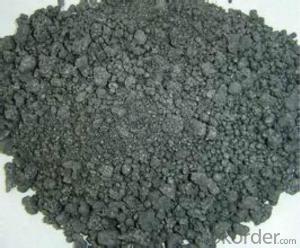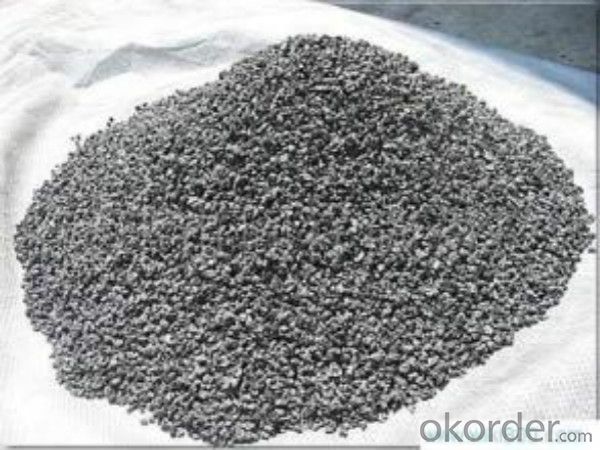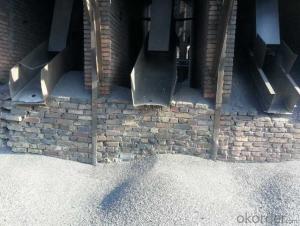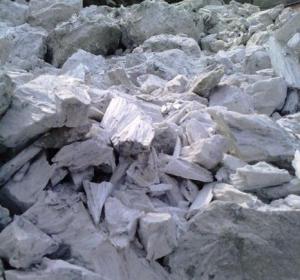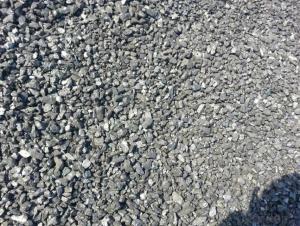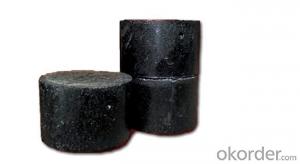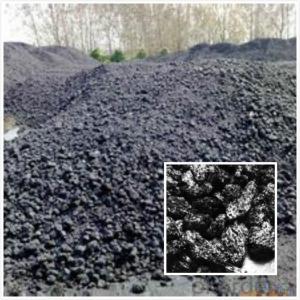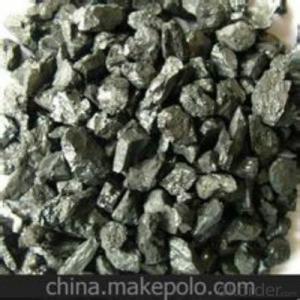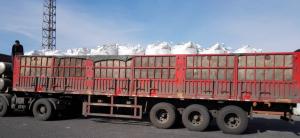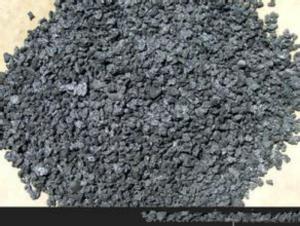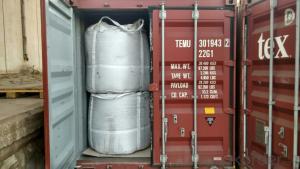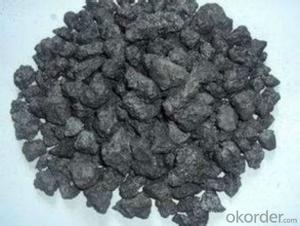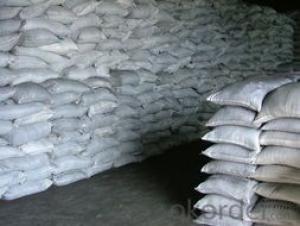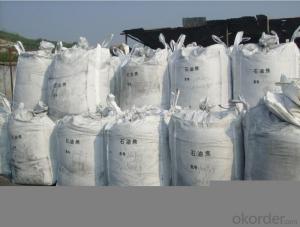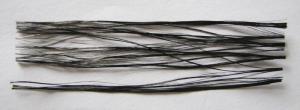Low S Calciend Petroleum Coke as Carbon additive
- Loading Port:
- Tianjin
- Payment Terms:
- TT OR LC
- Min Order Qty:
- 20.6
- Supply Capability:
- 2060 m.t./month
OKorder Service Pledge
OKorder Financial Service
You Might Also Like
Brief introduction
Calcined Petroleum Coke comes from delayed coke which extracted from oil refinery. Although Calcined Petroleum Coke contains a little bit higher level of sulfur and nitrogen than pitch coke, the price advantage still makes it widely used during steel-making and founding as a kind of carbon additive/carburant.
BaoSteel is world famous organization. This calcined petroleum coke's raw material is from Bao Steel, which has great quality guarantee. Bao Steel also named this coke as Pitch Coke.
Features
Our product has follwing advantages:
The morphology, chemistry and crystallinity of recarburisers
have a major impact on the overall casting cost. It is playing more and more important role in the industry.
The combined
application and cost benefits, which are derived through the
use of Desulco, enable foundries to manufacture castings in a
highly cost effective manner.
reduces
Recarburiser consumption
Power consumption
Inoculant consumption
MgFeSi consumption
Furnace refractory wear
Tap to tap time
Slag inclusions risk
Chill
increases
Casting microstructure
Productivity
Process consistency
Specifications
Products | CPC | ||
F.C.% | 98.5MIN | 98.5MIN | 98MIN |
ASH % | 0.8MAX | 0.8MAX | 1MAX |
V.M.% | 0.7 MAX | 0.7 MAX | 1 MAX |
SULFUR % | 0. 5MAX | 0. 7MAX | 1MAX |
MOISTURE % | 0.5MAX | 0.5MAX | 1MAX |
Pictures
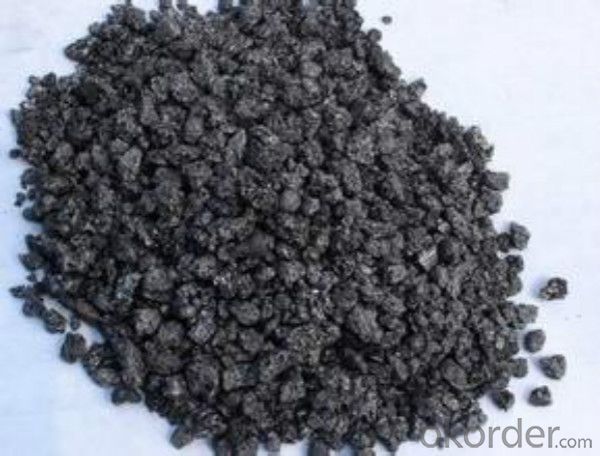
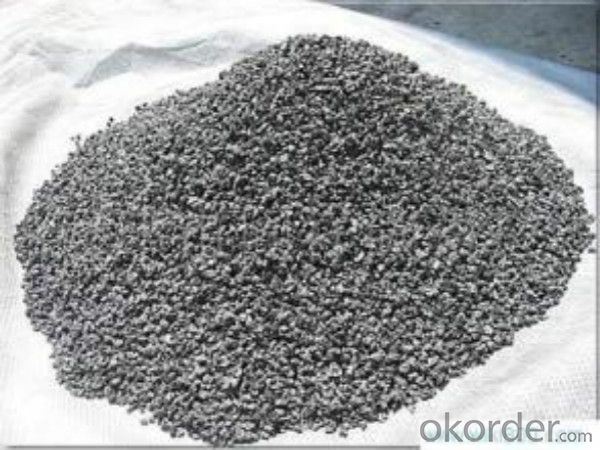
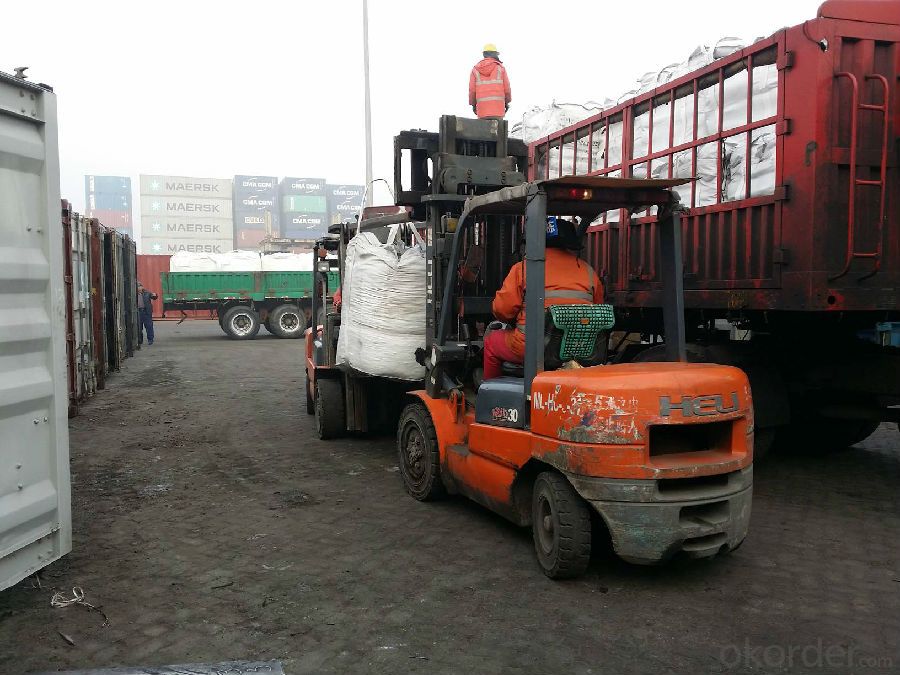
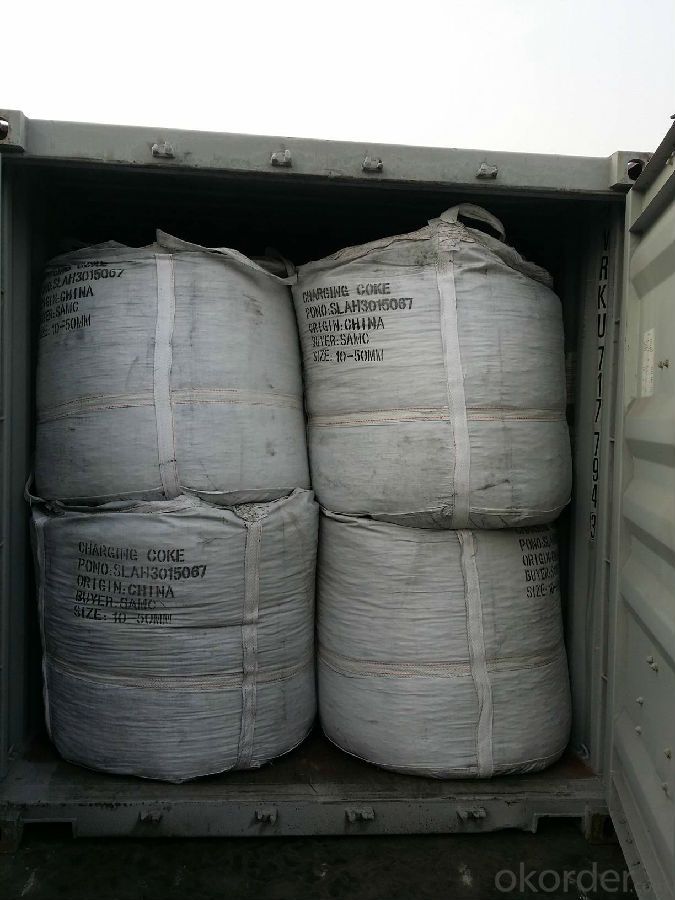
FAQ
1 What is the package?
In jumbo bag with/without pallet
2 What is the delivery time?
25 days after receiving the workable LC or down payment
3 What is the payment term?
T/T, L/C,D/P,D/A
- Q: What are the effects of carbon emissions on the stability of volcanic regions?
- Carbon emissions can potentially have both positive and negative effects on the stability of volcanic regions. On one hand, increased carbon dioxide levels in the atmosphere can contribute to global warming, which in turn may lead to melting of glaciers and ice caps, resulting in a rise in sea level. This rise in sea level can increase the likelihood of volcanic flank collapse, as the added pressure weakens the stability of volcanic slopes. Additionally, global warming can also trigger more frequent and intense rainfall, potentially leading to increased erosion and landslides in volcanic areas. On the other hand, carbon dioxide emissions can also have a stabilizing effect on volcanic regions. The injection of carbon dioxide into volcanic systems can enhance the pressure within magma chambers, promoting magma crystallization and solidification. This process can reduce the likelihood of volcanic eruptions, as the solidified magma acts as a barrier that hinders the movement and release of magma. Overall, the effects of carbon emissions on the stability of volcanic regions are complex and dependent on various factors. It is crucial to continue studying these interactions to better understand the potential consequences and implications for volcanic hazards and the overall stability of volcanic regions.
- Q: What kinds of barbecue carbon do you have?
- The disadvantage is more expensive. Ordinary charcoal advantages are cheap, disadvantages are different sizes, barbecue uneven fire, burning time is short, the process of baking carbon must be added. The mechanism of carbon is actually a mixture of carbon and coal, pressed into the multi hollow prism, from carbon containing ash on the look out the composition of coal.
- Q: What is carbon black pigment?
- Carbon black pigment is a fine black powder derived from the incomplete combustion of hydrocarbons. It is primarily composed of elemental carbon and is widely used as a pigment in various industries, including rubber, plastics, inks, coatings, and cosmetics, to impart a deep black color and enhance the strength and durability of the materials it is incorporated into.
- Q: What is carbon offsetting in the food industry?
- Carbon offsetting in the food industry refers to the practice of neutralizing or compensating for the greenhouse gas emissions associated with food production and distribution processes. It is a way for food companies to take responsibility for their carbon footprint and contribute to global efforts in mitigating climate change. Food production and distribution contribute significantly to greenhouse gas emissions, mainly through activities such as deforestation, land use changes, energy consumption, and transportation. Carbon offsetting allows companies in the food industry to invest in projects or initiatives that reduce or remove an equivalent amount of carbon dioxide from the atmosphere, effectively balancing out their emissions. There are various methods of carbon offsetting in the food industry. One common approach is investing in renewable energy projects, such as wind farms or solar power installations, to offset the emissions produced from energy consumption in food processing facilities or transportation. Another method is supporting projects that promote sustainable agriculture practices, such as reforestation or afforestation efforts, which can sequester carbon dioxide from the atmosphere. Carbon offsetting in the food industry also extends to supply chain management. Companies can work with their suppliers to implement more sustainable farming practices, reduce waste, and optimize transportation routes to minimize emissions. By collaborating with farmers, producers, and distributors, food companies can collectively work towards reducing their overall carbon footprint and achieving carbon neutrality. It is important to note that carbon offsetting should not be seen as a substitute for reducing emissions at the source. Instead, it should be viewed as a complementary measure to support the transition towards more sustainable and low-carbon practices in the food industry. By offsetting their emissions, food companies can demonstrate their commitment to environmental stewardship and contribute to the global fight against climate change.
- Q: What is the difference between soil organic matter and soil organic carbon?
- Organic matter is organic matter, but a large part of which is composed of carbon, but carbon content of different organic matter is different, the conversion coefficient is 1.724, most of the organic matter and organic carbon conversion of a mean value is the value.
- Q: How does carbon monoxide affect human health?
- Carbon monoxide is a highly toxic gas that can have severe impacts on human health. When inhaled, carbon monoxide enters the bloodstream and binds with hemoglobin, the molecule responsible for carrying oxygen to our cells. This binding is extremely strong and prevents oxygen from being delivered effectively, leading to a condition called carboxyhemoglobinemia. The symptoms of carbon monoxide poisoning can vary depending on the concentration and duration of exposure. Initially, individuals may experience mild symptoms such as headache, fatigue, dizziness, and nausea. However, as exposure continues or at higher concentrations, these symptoms can progress to confusion, impaired judgment, loss of consciousness, and even death. One of the most dangerous aspects of carbon monoxide is its ability to go undetected, as it is colorless, odorless, and tasteless. This makes it challenging to recognize its presence without proper monitoring equipment. Carbon monoxide poisoning can occur from various sources, including faulty heating systems, poorly ventilated appliances, and running engines in enclosed spaces. Prolonged or repeated exposure to carbon monoxide can have long-term health consequences. It can lead to neurological damage, memory loss, cognitive impairment, and even permanent brain damage. Additionally, it can exacerbate existing cardiovascular conditions, increasing the risk of heart attacks and strokes. To protect ourselves from carbon monoxide poisoning, it is crucial to have proper ventilation and functioning carbon monoxide detectors in our homes and workplaces. Regular maintenance of appliances and heating systems is also essential to minimize the risk of leaks. Recognizing the symptoms of carbon monoxide poisoning and seeking immediate medical attention are vital in preventing severe health outcomes.
- Q: What are the carbon monoxide collection methods?
- The catchment gas collection, because it is difficult to dissolve in waterOr the airbag
- Q: How does carbon impact the migration patterns of animals?
- Carbon emissions and climate change have significant impacts on the migration patterns of animals. The increased release of carbon dioxide in the atmosphere leads to global warming, which alters the timing and availability of critical resources necessary for migration, such as food and water. One of the most noticeable impacts of carbon emissions on animal migration is the alteration of seasonal patterns. As the climate warms, the timing of seasons changes, affecting the availability of food sources that animals rely on during migration. For instance, the earlier arrival of spring can result in a mismatch between the timing of migration and the availability of food, leading to negative consequences for the survival and reproduction of migratory species. Furthermore, climate change caused by carbon emissions affects the habitats and ecosystems that animals depend on during migration. Rising temperatures and changing precipitation patterns can lead to the loss or degradation of crucial habitats, such as wetlands or coastal areas, which serve as stopover points or breeding grounds for migratory animals. This loss of habitat can disrupt migration routes and cause changes in the distribution and abundance of species. In addition, carbon emissions contribute to the acidification of oceans, which has severe consequences for migratory species that rely on marine ecosystems. Acidification affects the availability of food and affects the reproductive success of marine species, leading to changes in migration patterns and population dynamics. Overall, the impact of carbon emissions on animal migration patterns is complex and multifaceted. It disrupts the delicate balance of ecosystems, altering the availability of resources and habitats that animals rely on during migration. Understanding these impacts is crucial for developing effective conservation strategies to mitigate the negative consequences of climate change on migratory species and maintain the integrity of their habitats.
- Q: What is the importance of carbon dating in archaeology?
- Carbon dating is crucial in archaeology as it allows us to determine the age of artifacts and remains with remarkable accuracy. By analyzing the levels of carbon-14 isotopes in organic materials, we can establish when they were last alive or in use. This information provides valuable insights into the chronology of human history, enabling archaeologists to reconstruct past civilizations, understand cultural changes, and refine our understanding of the past.
- Q: What is the structure of graphite, another form of carbon?
- Graphite is a unique form of carbon that exhibits a distinct structure, different from other forms such as diamond or amorphous carbon. Its structure consists of layers of carbon atoms arranged in a hexagonal lattice. Each carbon atom forms covalent bonds with three neighboring carbon atoms, resulting in a two-dimensional sheet-like structure. Within each layer, the carbon atoms are bonded together through strong covalent bonds, forming a planar network. The carbon-carbon bonds in graphite are significantly stronger than typical single bonds, making the structure highly stable. The hexagonal lattice arrangement of carbon atoms creates a honeycomb-like pattern, giving graphite its characteristic appearance. The layers in graphite are held together by weak van der Waals forces, allowing them to slide past each other with ease. This property gives graphite its lubricating nature, as well as its ability to leave a mark on paper when used as a pencil lead. The arrangement of carbon atoms in graphite also leads to its excellent electrical conductivity. The delocalized electrons in the structure can move freely along the layers, allowing for the flow of electric current. This property makes graphite useful in various applications, including electrical components, electrodes, and as a lubricant in high-temperature environments. In summary, the structure of graphite consists of layers of carbon atoms arranged in a hexagonal lattice, bonded together by strong covalent bonds within each layer and held together by weak van der Waals forces between the layers. This unique structure gives graphite its distinct properties, such as its lubricating nature, electrical conductivity, and versatility in various industrial applications.
Send your message to us
Low S Calciend Petroleum Coke as Carbon additive
- Loading Port:
- Tianjin
- Payment Terms:
- TT OR LC
- Min Order Qty:
- 20.6
- Supply Capability:
- 2060 m.t./month
OKorder Service Pledge
OKorder Financial Service
Similar products
Hot products
Hot Searches
